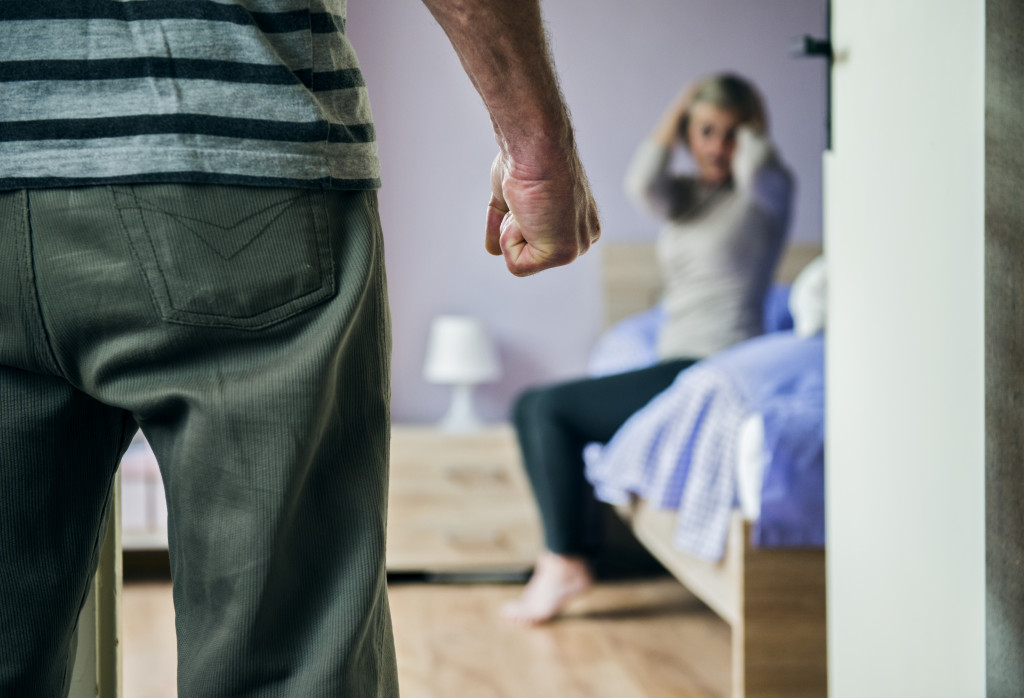- Abusive behavior in relationships can cause physical and mental health risks, such as depression, anxiety, and PTSD.
- To get out of an abusive marriage, you must record evidence of the abuse, such as photos, videos, medical records, and witness statements.
- Create an escape plan that includes a safe shelter, help from trusted people, financial arrangements, and protection for any children involved.
- Reaching out for help is essential so that organizations and professionals can provide assistance with legal matters and find safety and healing.
Being in an abusive marriage can be a terrifying and lonely situation. Nearly 20 people suffer from physical abuse by an intimate partner in the United States every minute. That adds up to more than 10 million women and men affected every year. Even more alarmingly, on average, 24 people per minute fall prey to physical violence, rape, or stalking by an intimate partner, which is someone they usually trust.
The frightening reality is that it’s not always easy to identify abuse when you’re in it. It usually starts as subtle remarks or jabs that seem harmless enough. But over time, those behaviors become increasingly frequent and more extreme until they spiral into consistent verbal abuse and physical violence. Unfortunately, many abuse victims remain in the relationship out of fear or because they feel like they can’t leave due to financial dependence on their abuser or other situations.
Abusive behavior doesn’t just take a toll on someone emotionally. There can also be serious health risks associated with such a relationship. A wide range of symptoms can manifest from prolonged exposure to abuse, including depression, anxiety, and post-traumatic stress disorder (PTSD). In addition to these mental health issues, physical injuries related to domestic violence include contusions, lacerations, broken bones, and puncture wounds; for more severe cases, internal bleeding and organ damage have also been reported.
Unfortunately, you might be in that situation, making it necessary to find a way to get out of it. Here are a few steps for getting out of an abusive marriage:
Record Evidence of Abuse

Getting evidence of domestic abuse is essential for anyone trying to get out of an abusive marriage. This evidence can be used to protect the victim and to take legal action if necessary. It is also helpful in showing friends, family, and even law enforcement what is going on in the relationship. Additionally, having records of abuse can provide a sense of safety, and security and a potential source of closure and healing.
Evidence can come in many forms. Here are a few examples:
Photos or Videos of Abuse
Bruises and other physical injuries should be documented with photos or videos. If possible, the date and time of the abuse should also be noted on the image or video.
Medical Records From a Doctor
If an abuser has caused physical harm, detailed medical records from a doctor can help prove it. The abuser might claim that the photos and videos were edited or inaccurate, so having medical records can help dispute those claims.
Witness Statements
Having witnesses to the abuse can help strengthen a case if it goes to court. Any witnesses must be reliable and trustworthy. It might also be beneficial to have them write down or record their statement of what they heard or saw.
Psychiatric Reports
If the abuse has been so severe that it has caused a mental health condition, such as depression or PTSD, a psychiatric report can be helpful.
Create an Escape Plan
Collecting evidence means you might suffer more abuse in the process. So, creating an escape plan is essential to ensure you’re safe. This plan should include where you can go for shelter and transportation, which you can turn to for help, and how you will get your financial situation in order.
Unfortunately, the situation becomes more complex when you also have to protect your kids. They will need to be aware of the plan to know what to do in an emergency. You should also make sure they can leave the situation if necessary.
Being discreet with getting out of the house will be necessary, especially if your abuser has access to your mobile phone or email. Make sure you use a safe computer and switch off location tracking on any device.
Reach Out for Help

It is essential not to go through this process alone. Many organizations provide support in escaping abusive relationships and finding safety and comfort. Local social services, domestic violence shelters, and the police can help victims of domestic abuse find their way out of these dangerous situations. It can also be helpful to seek counseling or therapy with someone experienced in helping victims of domestic abuse heal from their trauma.
Of course, a reliable divorce lawyer will also be necessary for more specific legal guidance. The professional will help navigate the divorce process and protect your rights throughout the ordeal.
Final Thoughts
Though it can be difficult and scary, getting out of an abusive marriage is possible with the proper steps. Collecting evidence, creating an escape plan, and reaching out for help are all critical components. Remember that you’re not alone on this journey; there are people out there who want to help guide you through it.



